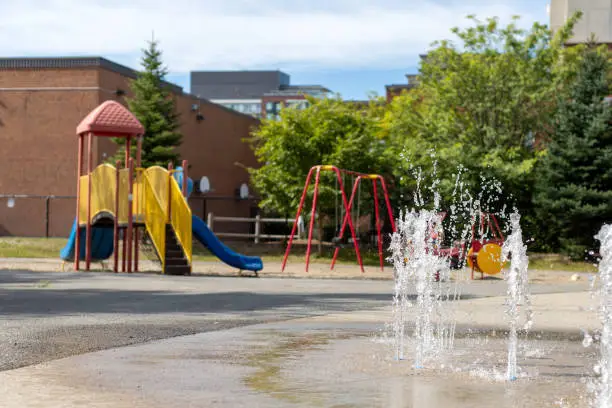When it comes to enhancing outdoor spaces in schools or municipalities, few features are as exciting or beneficial as a well-designed spray park. These interactive water play areas offer children a fun, safe, and inclusive way to cool off during the warmer months. However, before investing in splash park equipment, decision-makers must consider several factors to ensure long-term value and functionality. From safety standards and age-appropriate design to durability and budget, this guide offers essential insights for choosing the right solution. Whether you are adding to an existing playground equipment setup or building a new recreational zone, knowing what to expect will help you make a more informed purchase.
1. Understand the specific needs of your community
Before selecting any spray park features, assess your community’s needs. Consider the age groups that will use the facility: toddlers, elementary school children, or a mixed age group. Younger children benefit more from gentle sprays and low-pressure features, while older children may prefer larger structures and more interactive water effects. Schools and municipalities must also consider accessibility. Inclusive playground equipment and splash features ensure all children, including those with disabilities, can enjoy the space equally.
2. Prioritize safety and compliance standards
Ensuring safety is a primary concern when choosing splash park equipment.. Choose products that meet or exceed ASTM (American Society for Testing and Materials) and CPSC (Consumer Product Safety Commission) guidelines. Surfaces should be slip-resistant and designed to minimize water pooling. Adequate drainage systems are also crucial to prevent hazards. Additionally, many municipalities require specific certifications or inspections; therefore, ensure the manufacturer complies with local regulations.
3. Consider materials and durability
Because spray park equipment is constantly exposed to water, sun, and weather changes, materials must be chosen with care. Stainless steel and UV-resistant plastics are popular due to their durability and low maintenance requirements. Powder-coated surfaces can add extra protection and prolong the lifespan of the playground equipment. It is essential to collaborate with suppliers who offer warranties and provide post-sales support for parts and repairs.
4. Evaluate installation and maintenance costs
Upfront costs are only part of the equation. Installation, routine maintenance, and long-term servicing can significantly impact your budget. Certain splash park equipment involves more advanced plumbing or water filtration systems. Consider systems that offer water recirculation or metered usage to help reduce operational costs. Discuss these details with your supplier before finalizing your purchase.
5. Design for engagement and flow
The layout of a spray park influences how children interact with it. Zones can be divided by age group or water intensity to promote safe and enjoyable play. Engaging features, such as tipping buckets, ground sprayers, and water tunnels, enhance the user experience. When integrating water play with existing playground equipment, ensure the overall design is cohesive and supports active play without compromising safety or causing congestion.
Purchasing splash park equipment for schools or municipalities is a significant investment that requires thoughtful planning. By focusing on user needs, safety, durability, and cost-effectiveness, you can create an engaging spray park that becomes a community favorite for years to come. Collaborating with experienced suppliers and incorporating high-quality playground equipment ensures a functional, inclusive, and joyful space for all.


